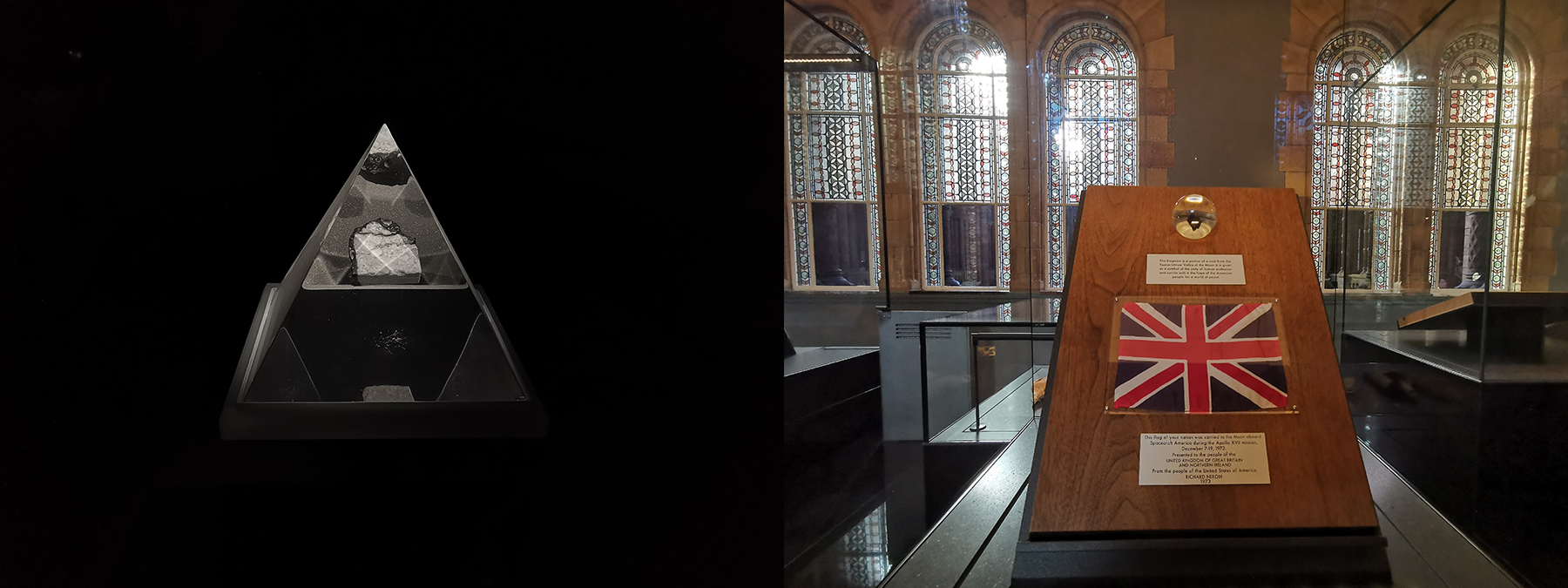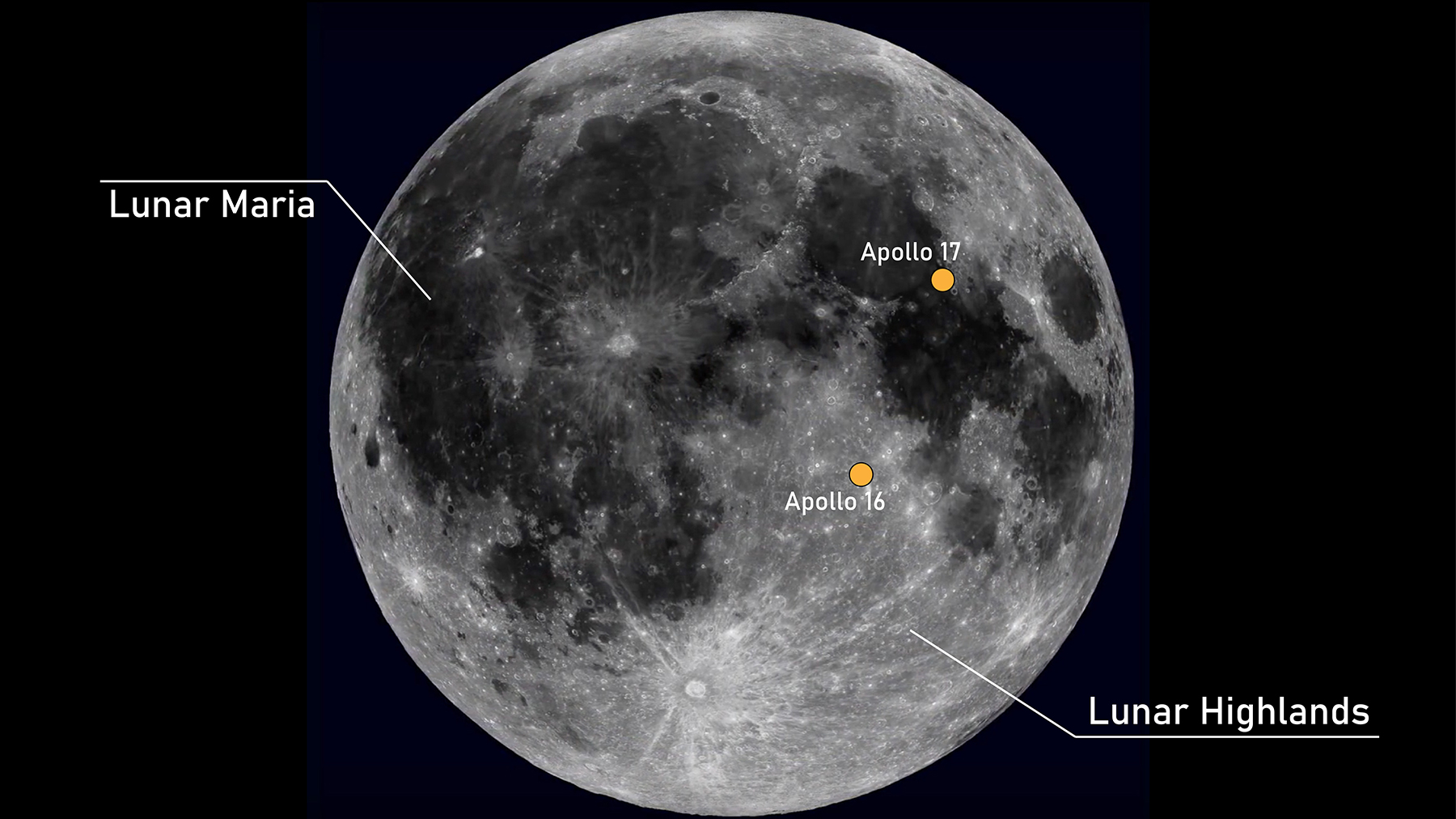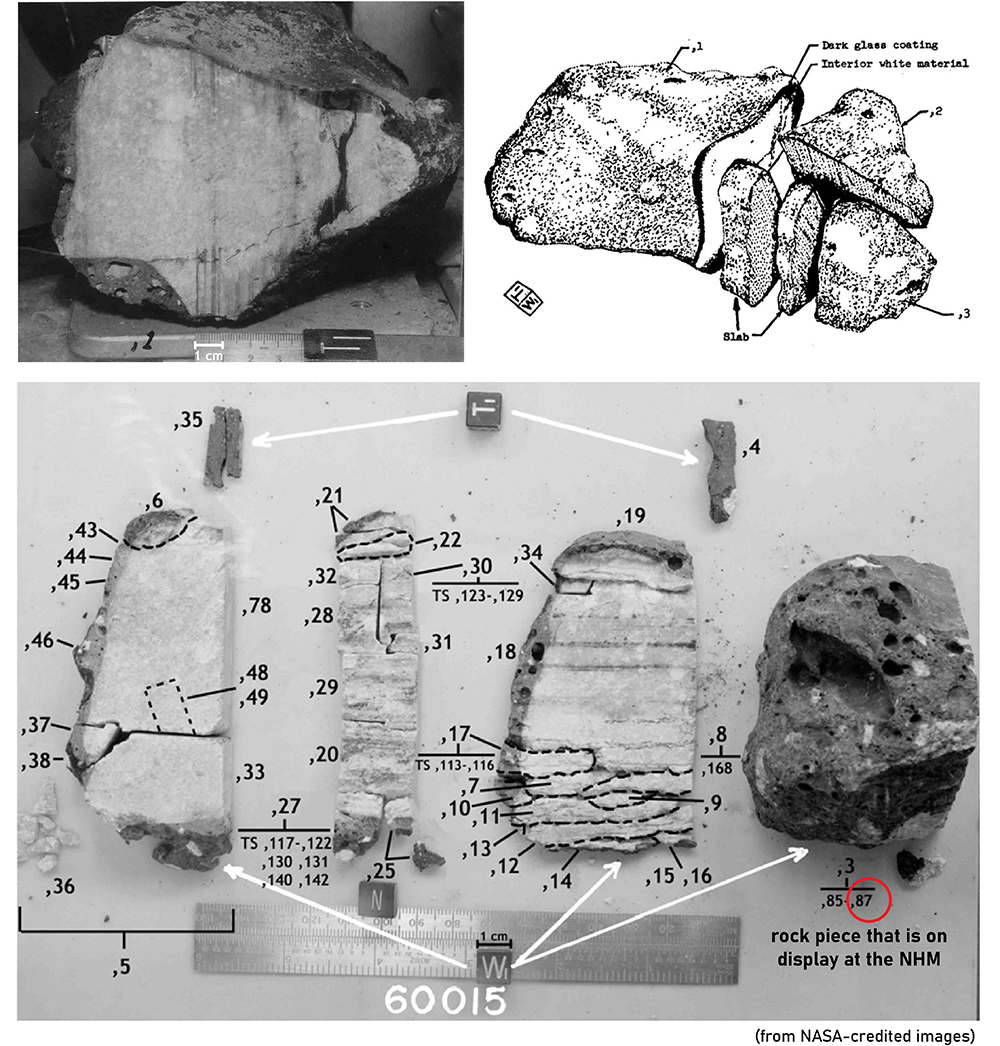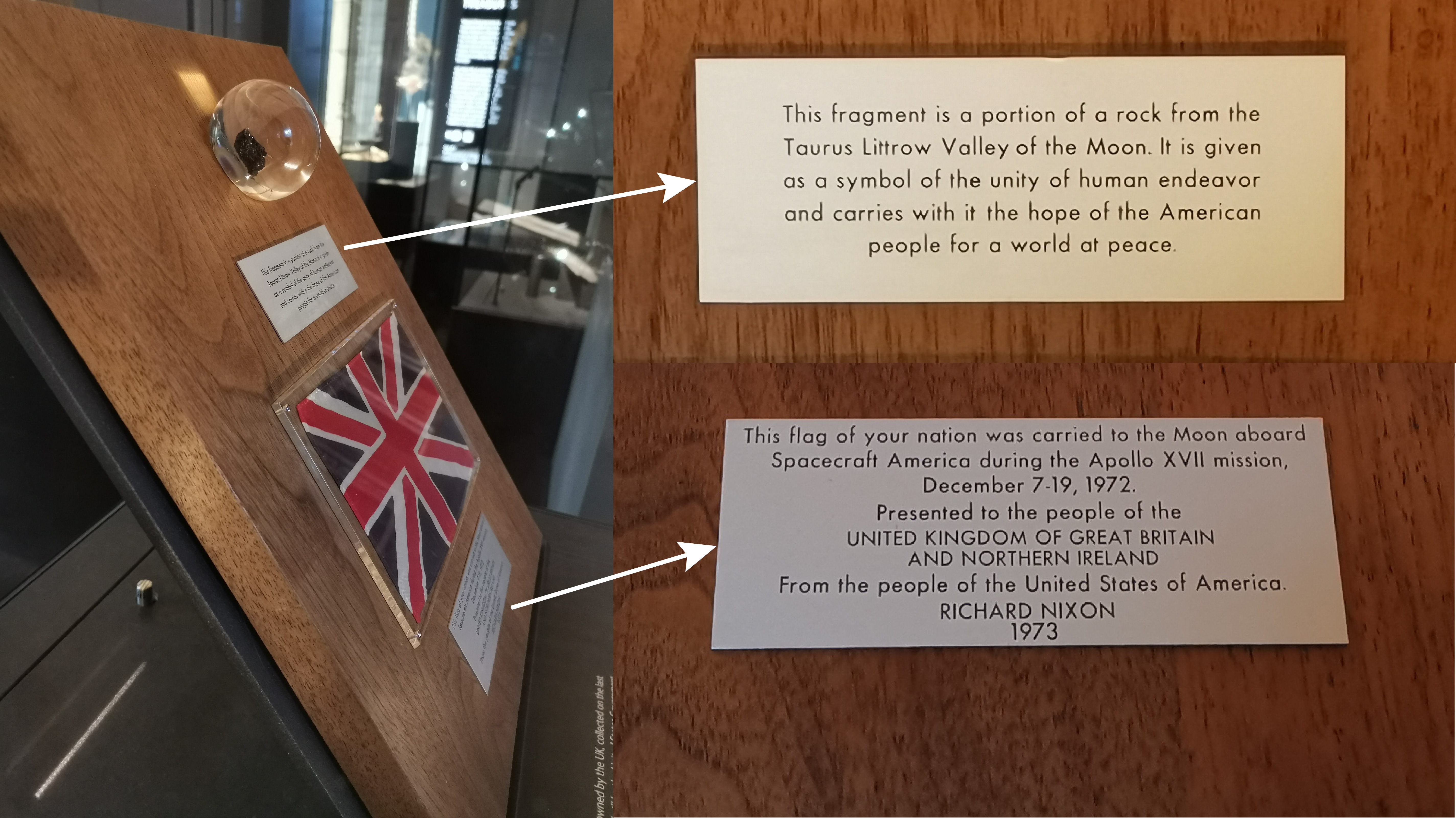

October 30, 2023
The Natural History Museum in London hosts two Moon rocks collected by astronauts during the Apollo missions. One rock was collected during the Apollo 16 mission and the other one during the Apollo 17 mission.

The Apollo 16 rock is called anorthositic breccia. It is mainly constituted by a mineral called anorthite, a feldspar rich is sodium, which gives the light colour to the sample. This is the type of rock that makes up the lunar highlands, the high albedo regions on the Moon. A breccia is a rock made of fragments of other rocks previously broken and now held up together thanks to processes that involve high temperatures and high pressures. The dark rind of the rock is made of glass, which formed form the space wethering processes that this rock endured for billion of years.

Apollo rocks have distinctive numeric code identifiers. The Apollo 16 rock sample on display at the NHM is 60015,87. The figure below shows the map of how the original rock (sample 60015) has been cut to obtain smaller samples, each with their own numeric identifier.

The Apollo 17 rock on display in the Tresaure Gallery is a small fragment of a basaltic rock. Basaltic rocks are dark, volcanic rock and they made up most of the dark areas visible on the lunar surface (called lunar maria. 'Maria' is plural for 'mare', which is the Latin word for 'sea'). These rocks come from ancient lava flows that filled the large lunar basins, which were created by huge impacts early in the geological history of the Moon.

Apollo 17 astronaut geologist Harrison Schmitt collected this rock (sample 70017) near the lunar module. The rock was later dubbed 'The Goodwill Rock' as its fragments were distributed to 135 nations around the world as symbol of peace (-> Find here where these fragments are in the world). Gene Cernan, the last astronauts on the Moon, made a speech just right before boarding the lunar module and heding back to Earth. He dedicated it with to the young people of Earth expressing a desire that all "live in peace and harmony in the future" (-> Watch that moment here).
Where excatly are these two Apollo rocks in the Natural History Museum? Here is how to find them!